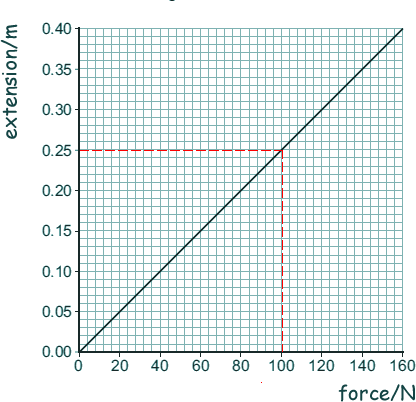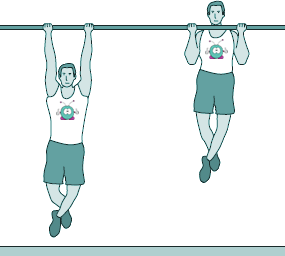GCSE Questions: Hooke's Law Q2. The diagram shows an exercise device called a chest expander. The three springs are identical.
A person pulls outwards on the handles and does work to stretch the springs. (a) What type of energy is stored in the springs when the springs are stretched? Elastic potential energy [1 mark] (b) The following graph shows how the extension of a single spring from the chest expander
[1 mark]
[3 marks]
[2 marks] (c) Barry is doing an exercise called a chin-up.
Each time he does one chin-up Barry lifts his body 0.40 m vertically upwards. His mass is 65 kg. Barry is able to do 12 chin-ups in 60 seconds. Calculate the power he developes when doing this exercise. Gravitational field strength = 10 N/kg
Barry's weight = mg = 65 x 10 = 650 N Work done in one chin up = weight x vertical distance raised Work done = 650 x 0.40 = 260 J Work done in doing 12 chin ups = 12 x 260 = 3120 J Power = work done/time taken P = 3120/60 = 52 W [3 marks] [10 Marks TOTAL] |
Follow me...
|








